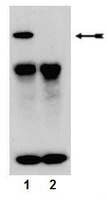Spatial distribution of epigenetic modifications in Brachypodium distachyon embryos during seed maturation and germination.
Wolny, E; Braszewska-Zalewska, A; Hasterok, R
PloS one
9
e101246
2014
Zobrazit abstrakt
Seed development involves a plethora of spatially and temporally synchronised genetic and epigenetic processes. Although it has been shown that epigenetic mechanisms, such as DNA methylation and chromatin remodelling, act on a large number of genes during seed development and germination, to date the global levels of histone modifications have not been studied in a tissue-specific manner in plant embryos. In this study we analysed the distribution of three epigenetic markers, i.e. H4K5ac, H3K4me2 and H3K4me1 in 'matured', 'dry' and 'germinating' embryos of a model grass, Brachypodium distachyon (Brachypodium). Our results indicate that the abundance of these modifications differs considerably in various organs and tissues of the three types of Brachypodium embryos. Embryos from matured seeds were characterised by the highest level of H4K5ac in RAM and epithelial cells of the scutellum, whereas this modification was not observed in the coleorhiza. In this type of embryos H3K4me2 was most evident in epithelial cells of the scutellum. In 'dry' embryos H4K5ac was highest in the coleorhiza but was not present in the nuclei of the scutellum. H3K4me1 was the most elevated in the coleoptile but absent from the coleorhiza, whereas H3K4me2 was the most prominent in leaf primordia and RAM. In embryos from germinating seeds H4K5ac was the most evident in the scutellum but not present in the coleoptile, similarly H3K4me1 was the highest in the scutellum and very low in the coleoptile, while the highest level of H3K4me2 was observed in the coleoptile and the lowest in the coleorhiza. The distinct patterns of epigenetic modifications that were observed may be involved in the switch of the gene expression profiles in specific organs of the developing embryo and may be linked with the physiological changes that accompany seed desiccation, imbibition and germination. | | 25006668
 |
Tissue-specific epigenetic modifications in root apical meristem cells of Hordeum vulgare.
Braszewska-Zalewska, AJ; Wolny, EA; Smialek, L; Hasterok, R
PloS one
8
e69204
2013
Zobrazit abstrakt
Epigenetic modifications of chromatin structure are essential for many biological processes, including growth and reproduction. Patterns of DNA and histone modifications have recently been widely studied in many plant species, although there is virtually no data on the spatial and temporal distribution of epigenetic markers during plant development. Accordingly, we have used immunostaining techniques to investigate epigenetic modifications in the root apical meristem of Hordeum vulgare. Histone H4 acetylation (H4K5ac), histone H3 dimethylation (H3K4me2, H3K9me2) and DNA methylation (5mC) patterns were established for various root meristem tissues. Distinct levels of those modifications were visualised in the root cap, epidermis, cortex and vascular tissues. The lateral root cap cells seem to display the highest level of H3K9me2 and 5mC. In the epidermis, the highest level of 5mC and H3K9me2 was detected in the nuclei from the boundary of the proximal meristem and the elongation zone, while the vascular tissues were characterized by the highest level of H4K5ac. Some of the modified histones were also detectable in the cytoplasm in a highly tissue-specific manner. Immunolocalisation of epigenetic modifications of chromatin carried out in this way, on longitudinal or transverse sections, provides a unique topographic context within the organ, and will provide some answers to the significant biological question of tissue differentiation processes during root development in a monocotyledon plant species. | Immunofluorescence | 23935955
 |










